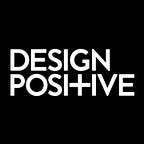Website Best Practices That Might Surprise You
For years, website designers emphasized the importance of the above the fold content, added links and buttons to everything to lower bounce rates, and ensured that each page had hundreds of words for SEO value. But the goal of your website is not about looking beautiful, having high click rates or pleasing Google. The real goal is to tell your brand story and gain customers.
So, what is everyone doing putting technology goals above customer goals? Well there’s certainly a challenge in knowing what your customer wants, speaking directly to the problems they are trying to solve and delighting them with your products and services. Instead, many people measure a website’s success in the analytics dashboards because that feels more concrete.
When a visitor lands on your website, you have 15–20 seconds to draw them in, and that includes load time! We’ll share with you some of the tips we’ve seen that work for most businesses to capture your audience quickly and drive them to the information you want them to know.
Limit Your Website Links
Internal linking is a huge asset to your website when used appropriately. But it’s gotten out of control in the SEO heavy world we live in.
When you think about your website, you should be considering the journey you want to take your visitors on. Linking every line of text that’s relevant to another page isn’t the goal. Major landing pages, such as your homepage, should help visitors self-identify the audience they fit into or the challenge they’re looking to solve.
A link is really a guide telling your user “go here next.” It’s your way of funneling the visitor to the content you want them to see instead of losing them to the click mania that many websites have become.
According to Moz, internal links serve three purposes:
1. Allow a user to navigate the site
2. Establish website hierarchy
3. Spread link equity throughout the site
As you look at that list of internal linking purposes, you’ll see one frightening reality. Only 33% of the purposes is about the website visitor and the rest is about an algorithm.
We recently redesigned the Branded Group website. As you scroll the website, consider how many invitations you get to click away from the homepage. Instead of focusing on bounce rates and deep website linking, the homepage gives you a strong overview of who they are and what they do. The simplicity makes you stop, think and learn.
Avoid Above the Fold Clutter
Emphasis on the above the fold content has led to content that competes for the eyeballs and in a sense, cannibalizes itself. Readers are quite capable of scrolling, so let’s start giving them a reason to scroll.
The notion that you need to tell website visitors everything important and get all your calls to action above the fold to ensure you don’t lose them is antiquated in most industries. Instead, you need to focus on offering content that keeps them engaged and educates them along the way.
Let’s return to the Branded Group website. The homepage headline and supporting text tell you who the company is and the brand video that plays in the background shows you. There is no button in the hero space. In fact, the only clicks you’ll find here are the main menu, login icon, and logo that sends you back to the top of the homepage.
The company’s story appears throughout every section of the homepage, not just above the fold. It progressively tells the reader who they are, why they matter, and how they create solutions for their customers.
Say More with Less
SEO has significantly impacted the way some people write copy. They focus on putting in the right keywords, related keywords and meeting content length goals set by algorithms instead of focusing on people.
Being verbose might impress search engines, but it doesn’t turn website visitors into prospects. We need to get back to focusing on delivering content that speaks to our audience and challenging ourselves to say more with less. And once that work is complete, then we can integrate some keywords and optimize for SEO to appeal to both search engines and potential customers.
Long sentences don’t make you sound smarter. Big words don’t make your website skimmable. And large blocks of text only serve to overwhelm your visitors.
On the Branded Group website, most blocks of text are only a couple lines. One section has seven words. Why? Because we could.
How to Evaluate Your Website
Put your new visitor hat on and go through your company homepage in 30 seconds. Now ask yourself these questions.
· What did you learn?
· Do you understand why you’d want to do business with your company?
· What does your company stand for?
· Do you know what your company actually does?
· What are some things you learned that didn’t need to be there?
· Is there some fat that needs to be trimmed?
· Is the copy clear?
· Is it on brand?
· Does it meet website accessibility guidelines?
· Is it visually interesting?
Businesses that choose to be trendsetters instead of followers in their website design, structure and copy are the ones who will earn the important statistics: happy customers. Afterall, attracting and retaining customers is the most important function of your website and it’s what we at Design Positive devote our careers to.
